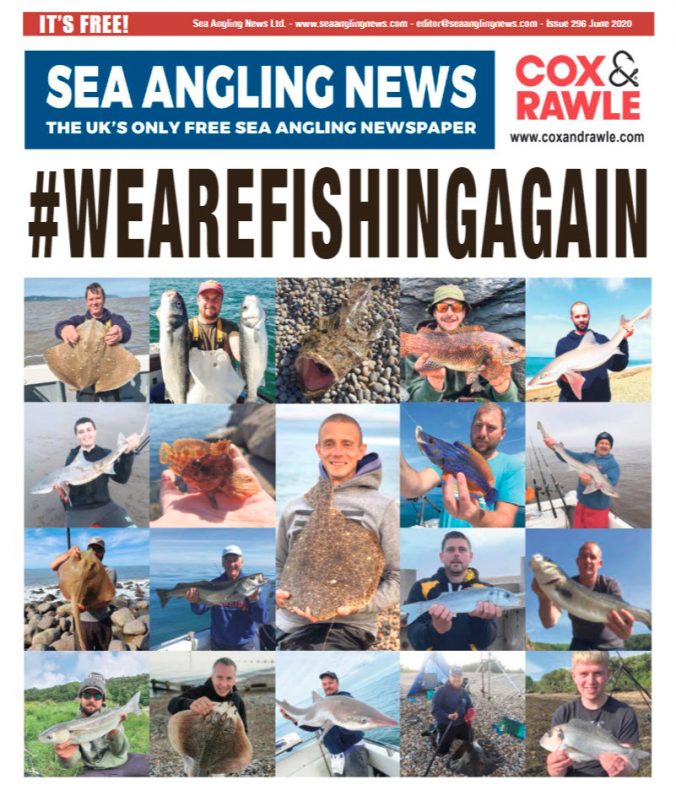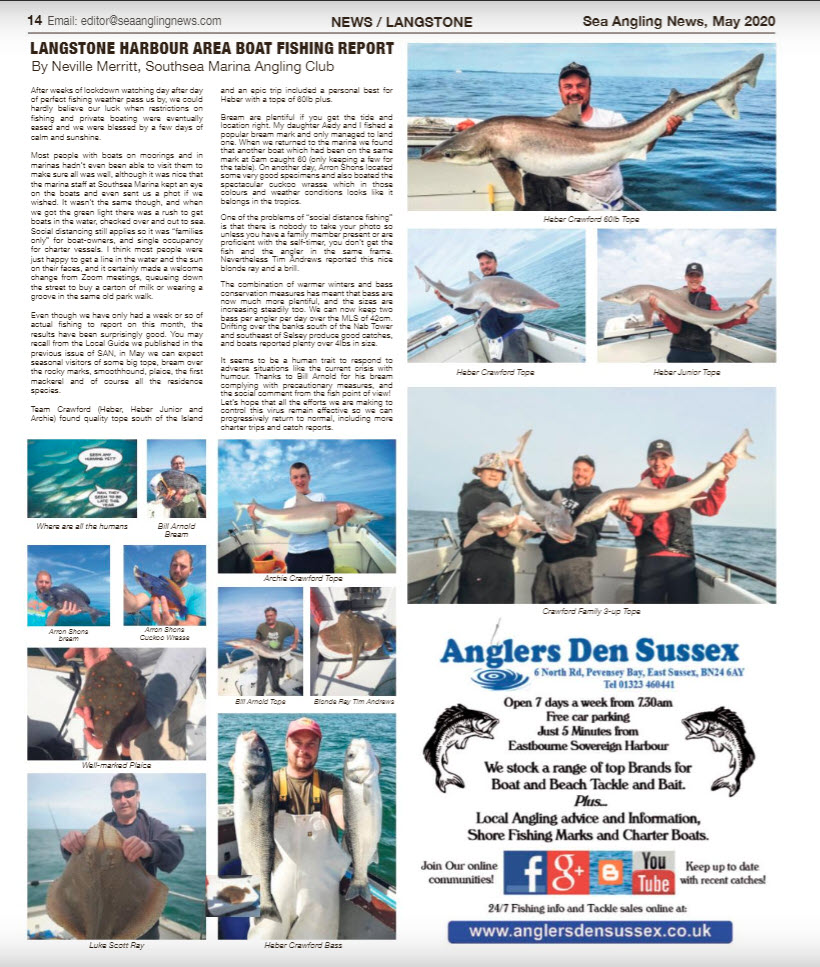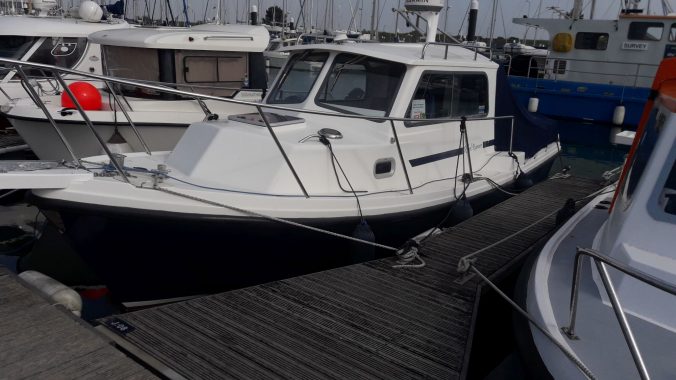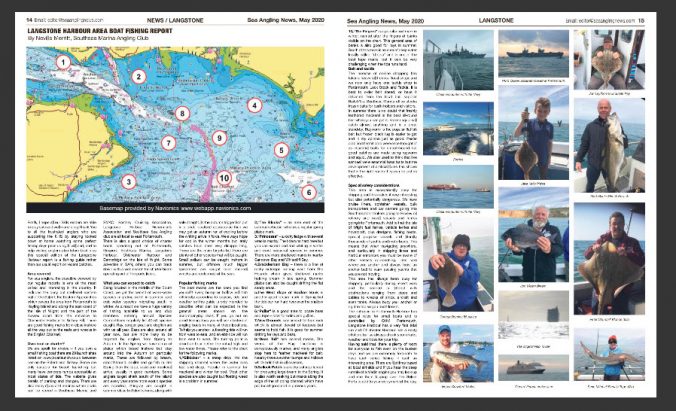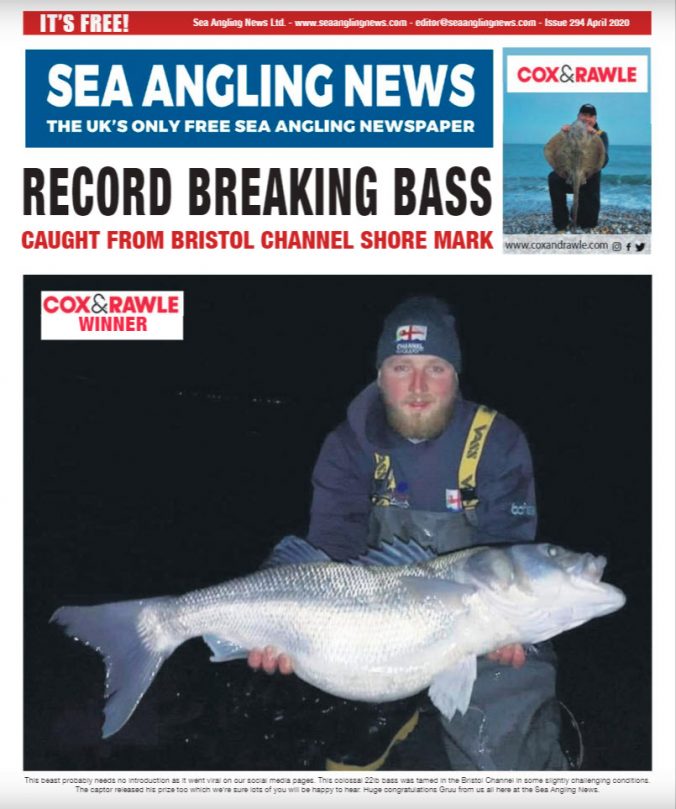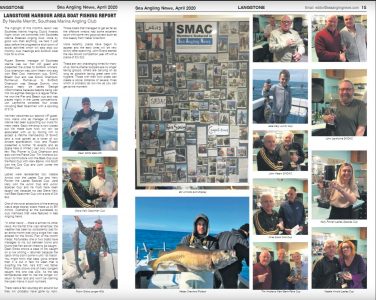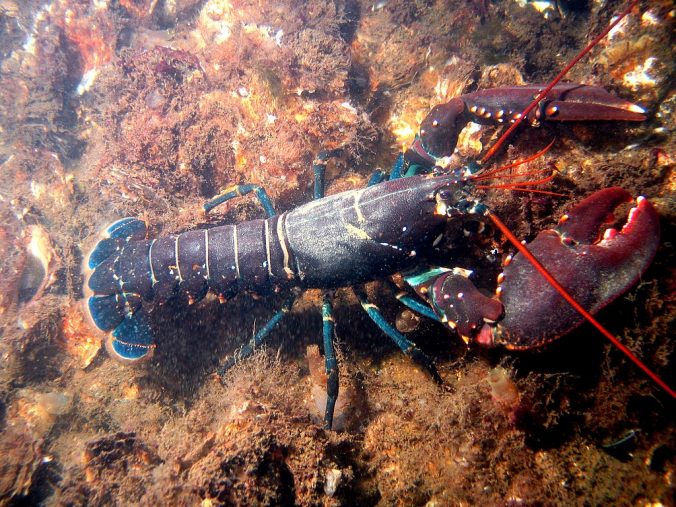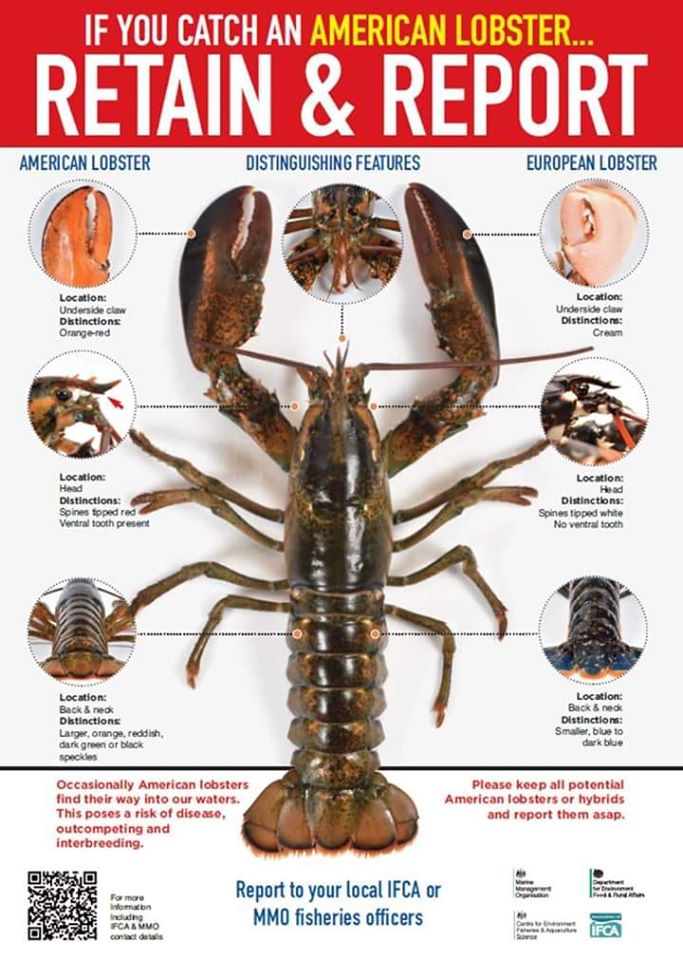Langstone Harbour Local Report – there was no fishing due to lockdown restrictions, so instead we published a guide to fishing in the area. This was published in the online edition – there was no print edition this month.
Firstly, I hope all our SAN readers are able to stay safe and well – and a big Thank You to all the frustrated anglers who are supporting the NHS by staying locked down at home watching some perfect fishing days pass us by. It will end, and to help visiting anglers plan future boat trips this special edition of the Langstone Harbour report is a fishing guide rather than our usual report on recent catches.
Area covered
For sea anglers, the coastline covered by our regular reports is one of the most varied and interesting in the country. It includes the busy but sheltered eastern half of the Solent; the Eastern Approaches which covers the area from Portsmouth to Hayling Island and along the east coast of the Isle of Wight; and the part of the Sussex coast from the entrance to Chichester Harbour to Selsey Bill. There are good fishing marks from close inshore all the way out to the reefs and wrecks in the English Channel.
Own boat or charter?
We are spoilt for choice – if you own a small fishing boat there are 29 launch sites listed on www.boatlaunch.co.uk between Lee-on-the-Solent and Selsey. Some are only suitable for beach launching but many have concrete ramps accessible at most states of tide. The website gives details of parking and charges. There are also many clubs and marinas where boats can be stored – Southsea Marina and SMAC, Eastney Cruising Association, Langstone Harbour Fishermen’s Association and Southsea Sea Angling club are all local to east Portsmouth.
There is also a good choice of charter boats operating out of Portsmouth, Gosport, Southsea Marina, Langstone Harbour, Chichester Harbour and Bembridge on the Isle of Wight. Some advertise in SAN, others you can track down with a web search for charter boats operating out of the ports listed.
What you can expect to catch
Being located in the middle of the South Coast, we get the benefit of warm-water species migrating north in summer, and cold-water species migrating south in winter. As a result we have a huge variety of fishing available to us and club members entering annual Species Competitions regularly list 40-50 species caught. Ray, conger, pout and dogfish are with us all year. Bass are also around all year now, but are more likely to be targeted by anglers from Spring to Autumn. In the Spring we have a run of plaice which breed inshore but stay around into the Autumn on particular marks. These are followed by bream, smoothhound, mullet and garfish in late Spring then the tope, scad and mackerel arrive, usually in good numbers. Some anglers target shark south of the Island and every year some more exotic species are reported. Stingray are caught in summer close to Solent shores, along with sole at night. In the autumn trigger fish put in a brief, localised appearance then we may get an autumn run of codling before the whiting arrive in force. We always hope for cod in the winter months but lately catches have been very disappointing. These are the main targets but there are plenty of other species that will be caught. Small pollack can be caught inshore in summer, but offshore much bigger specimens are caught over channel wrecks and reefs most of the year.
Popular fishing marks
The best marks are the ones you find yourself! Every bump or hollow will fish differently according to season, tide and weather so this guide is only intended to describe what can be expected in the general areas shown on the accompanying chart. If you go out on good fishing days you will see clusters of angling boats in many of these locations. To help you anchor: a flooding tide will run from west to east, and an ebb tide will run from east to west. The turning point is about an hour before the actual high and low water times. Please refer to the chart for the following marks.
- “Gilkicker” – a steep drop into the shipping channel where the water runs fast and deep. Popular in summer for mackerel and winter for cod. Most other species are also caught but floating weed is a problem in summer.
- “The Blocks” – an area east of the submarine barrier which is a regular spring plaice mark.
- “Princessa” – a rocky ledge with several wrecks nearby. The tide runs hard here but you can expect cod and whiting in winter and most seasonal species in summer. There are more sheltered marks in nearby Sandown Bay and Whitecliff Bay.
- Bracklesham Bay – there is a line of rocky outcrops running west from The Hounds which gives sheltered marks holding bream in late spring. Summer plaice can also be caught drifting the flat sandy areas.
- The West slope of Boulder Bank is another good bream mark in Spring but the tide can run hard here over the shallow bank.
- “Pullar” is a good area to locate bass and tope – look for holes and gullies.
- New Grounds is an area of flat hard rock which is almost devoid of features but seems to hold fish. It is good for summer drifting for rays and bass.
- “Dean Tail” has several marks. The wreck of the Flag Theofano is conspicuously marked and many anglers stop here to feather mackerel for bait. Nearby there are other bumps and hollows which hold fish in all seasons.
- Bullock Patch is a rocky outcrop famed for producing large bream in the Spring. It is also worth seeking out marks along the edge of the shipping channel which have produced good cod in previous years.
- “The Fingers” is a popular cod mark in winter, named after the fingers of banks visible on the chart. This general area of banks is also good for rays in summer. South of this mark is an area of deep water locally called “Utopia” and is one of the best tope marks, but it can be very challenging when the tide runs hard.
Bait and tackle
The increase of on-line shopping has taken a heavy toll from our local shops and we now only have one tackle shop in Portsmouth; Lock Stock and Tackle. It is best to order bait ahead, or have it delivered from the local bait supplier Baits’r’Us. Southsea Marina office stocks frozen baits for berth holders and visitors.
In summer there is no doubt that freshly feathered mackerel is the best all-round bait when you can get it. Frozen squid will catch almost anything and is a great stand-by. Ragworm is the popular flatfish bait but frozen black lug is easier to get and in my opinion just as good. Peeler crab and hermit crab were once thought of as essential baits for smoothhound but good catches are made using ragworm and squid. We also used to think that live sandeel were essential bass baits but the development of artificial lures has shown that in the right hands they can be just as effective.
Special safety considerations
This area is exceptionally busy for shipping and this makes it very interesting but also potentially dangerous. We have cruise liners, container vessels, bulk transporters and car carriers going into Southampton; tankers going to Fawley oil refinery and naval vessels and ferries going into Portsmouth. Add to that the Isle of Wight fast ferries, vehicle ferries and hovercraft, plus dredgers, fishing boats, special purpose vessels and literally thousands of yachts and motorboats. This means that when navigating anywhere, and particularly in shipping lanes and harbour entrances you must be aware of other vessels approaching. Take care where you anchor and always hoist an anchor ball to warn passing yachts that you are not moving.
This area has always been busy for shipping, particularly during recent wars and the seabed is littered with obstructions ranging from pipes and cables to wrecks of ships, aircraft and even tanks. Always buoy your anchor or rig it to trip so you don’t lose it.
The entrance to Portsmouth Harbour has special rules for small boats and is controlled by QHM Portsmouth. Langstone Harbour has a very fast tidal run and Chichester Harbour has a nasty offshore bar so always check your charts, weather and tides for your trip.
Having said that, there is plenty of room for everyone to fish even on the busiest days and we are extremely fortunate to have such varied fishing in such an interesting area. There are Spitfires based at local airfields and if you hear the deep rumble of a Merlin engine you may look up and see them looping over the Solent Forts to add to your enjoyment of the day.
Neville Merritt
SMAC
Read the full issue of SAN here
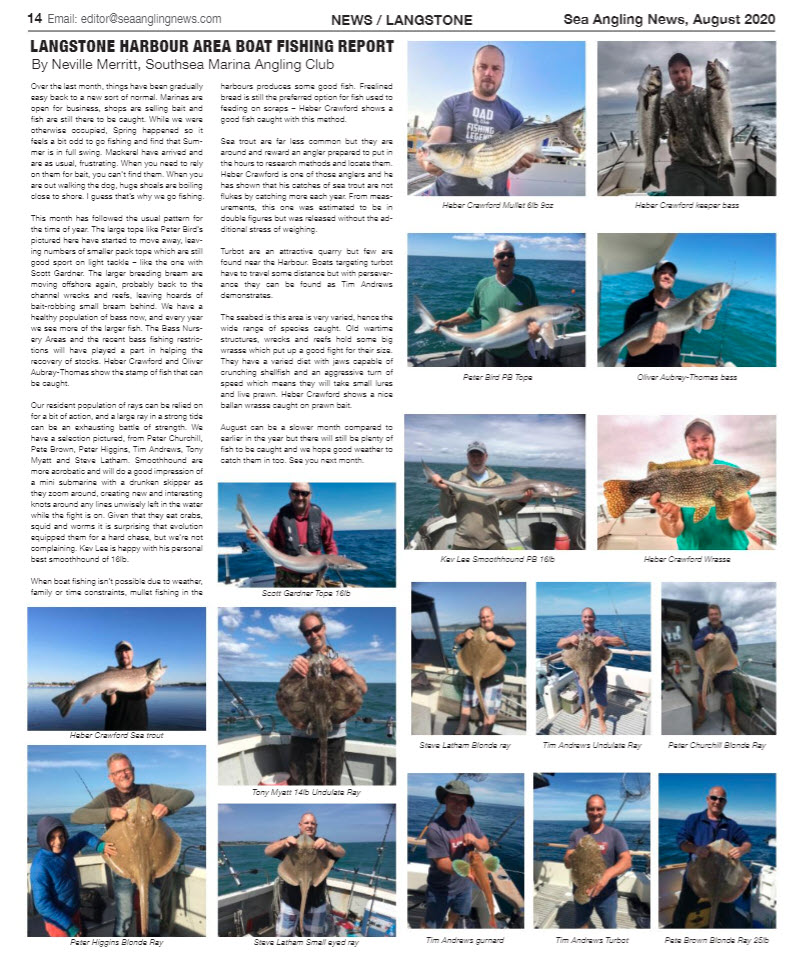
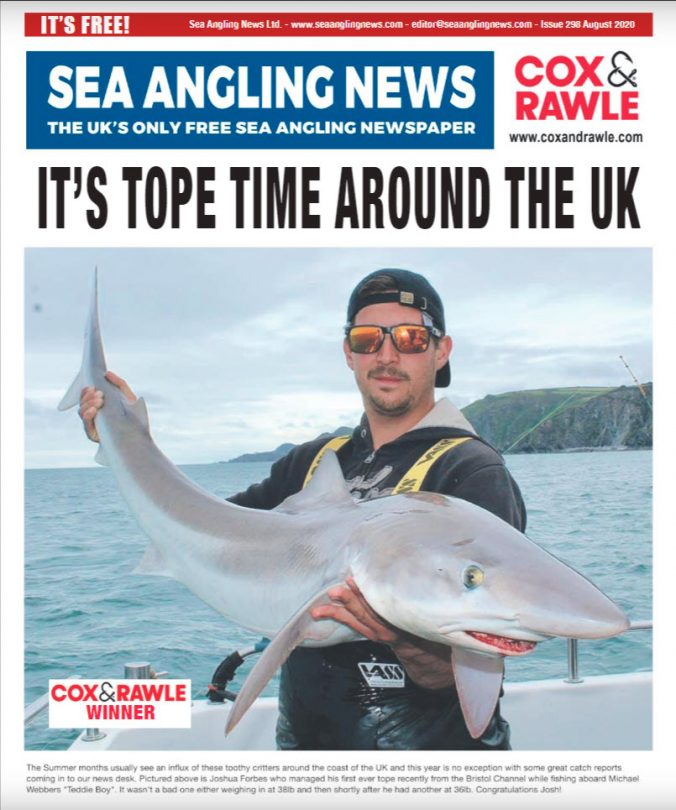
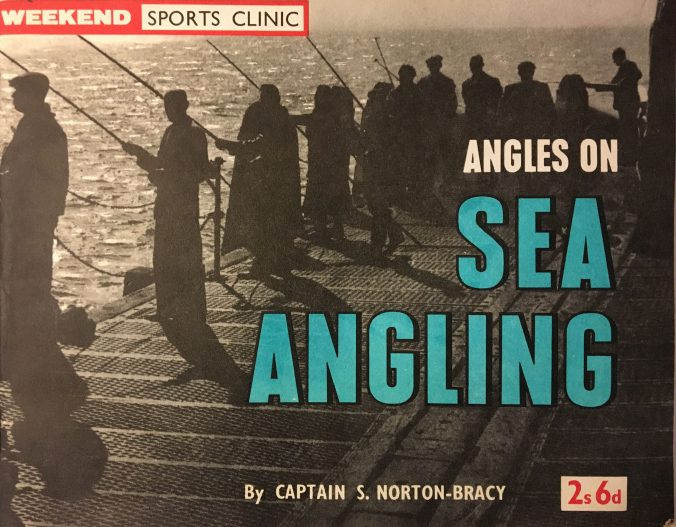
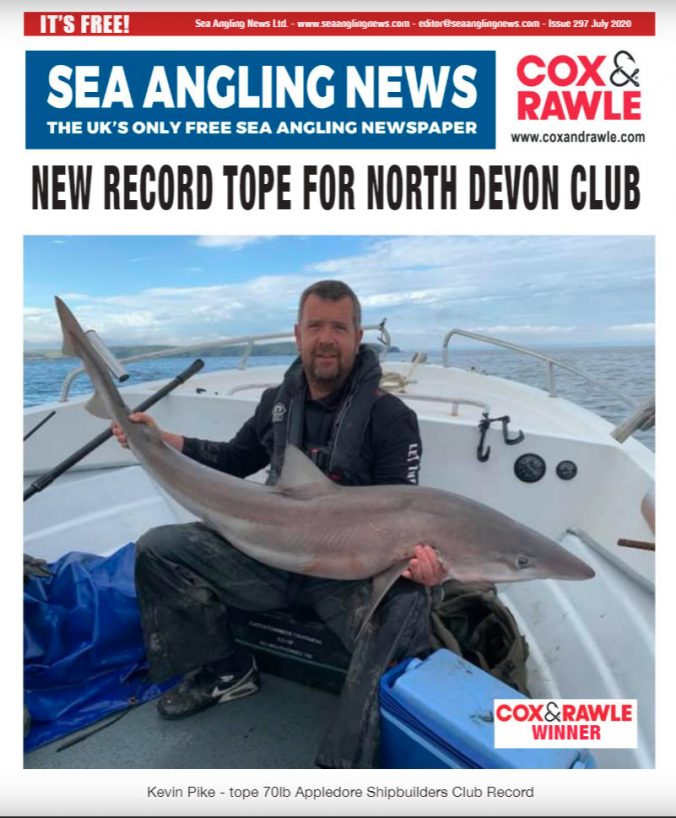
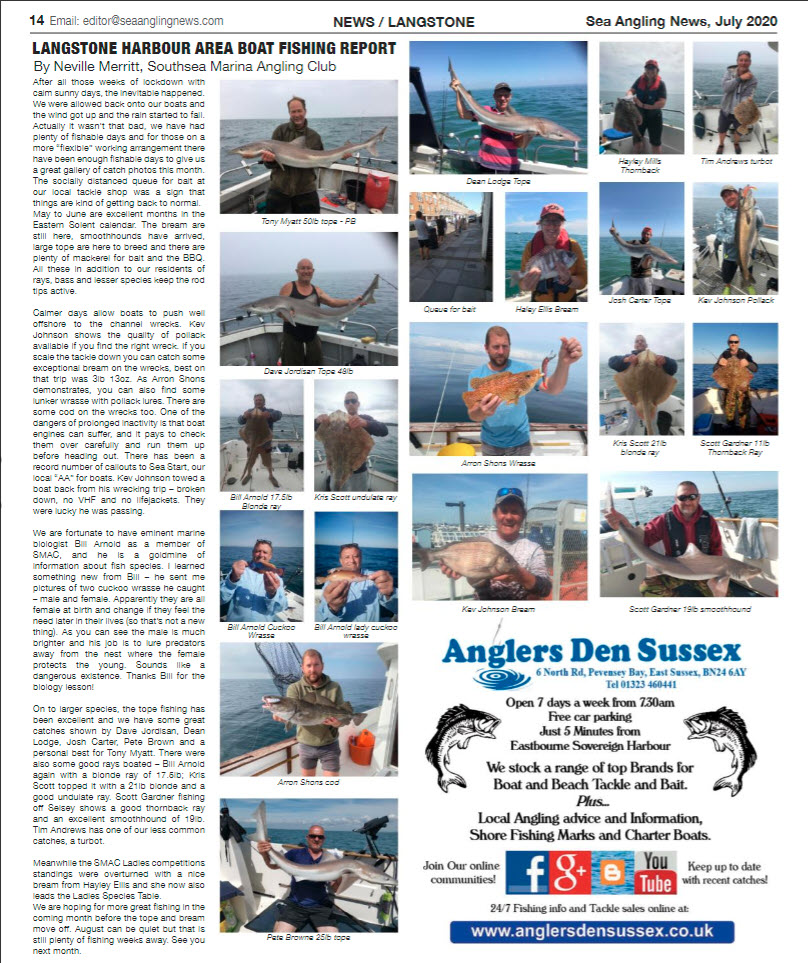
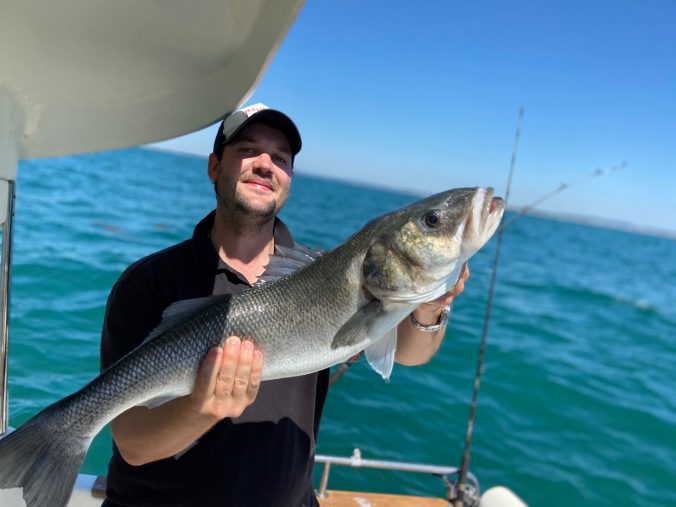
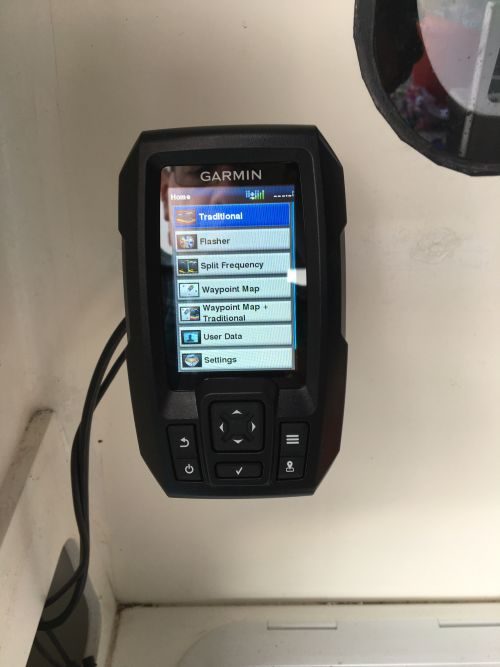
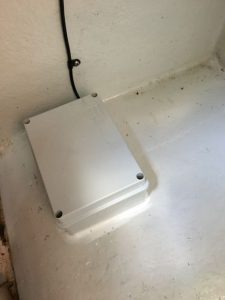
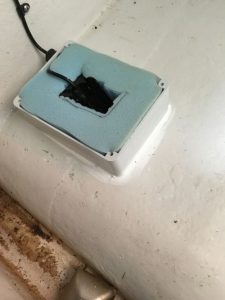 Cut your foam to shape so it fits snugly in the box.
Cut your foam to shape so it fits snugly in the box.